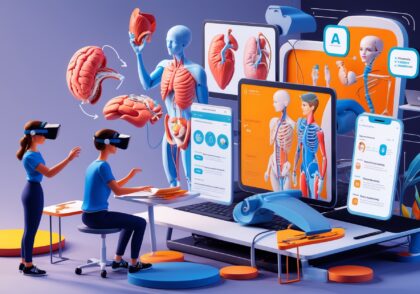Art and Anatomy: A Historical and Scientific Link
Introduction
The combination of art and anatomy has always been of interest to artists, doctors, and scientists throughout human history. This connection has led to the formation of great works of art that demonstrate not only beauty but also a deeper understanding of the structure of the human body. In this article, we will examine the role of art in the understanding of anatomy, its impact on medical science, and how this connection between art and science is possible.
Art and Anatomy: A Historical and Scientific Link
Art and Anatomy in the Renaissance
The Renaissance is one of the most important periods in human history, when art and science were deeply intertwined. Artists such as Leonardo da Vinci, Michelangelo, and Andrea Vesalius were able to depict human anatomy with unparalleled accuracy. Da Vinci had a great influence not only on art, but also on medicine, by performing detailed dissections and using anatomy to create works of art.
The role of Leonardo da Vinci:
-
- Detailed drawings of human anatomy
- Using anatomy to create artwork
- Influence on medical science and anatomy education
The influence of art on the development of anatomy
Art has not only addressed the aesthetics of the human body, but has also directly contributed to the advancement of the science of anatomy. By carefully studying the structure of the body, artists were able to discover new details of the anatomy of the human body. This mutual influence between art and science led to the evolution of many educational methods in medical science, especially in the field of anatomy.
The relationship between science and art in anatomy:
-
- Improving accuracy in human anatomy
- The impact of art on the visual appearance of body structure
- Using art in teaching and learning anatomy
Art in Anatomy Teaching: New Learning Tools
Using drawing and modeling in teaching anatomy
Throughout history, detailed drawings of human anatomy have been used as a teaching tool in universities and medical centers. These drawings allow doctors and students to better understand the internal structures of the body and the functions of various body parts. Anatomical drawings continue to be important in teaching anatomy today.
Benefits of drawing in teaching anatomy:
-
- Accurate display of body structure
- Helping to understand the function of body organs
- Using 3D models and educational animations
3D and digital modeling in anatomical art
With the advancement of technology, 3D and digital modeling have become important tools in teaching anatomy. These techniques allow artists and doctors to depict the human body in different dimensions and with very high accuracy. The use of digital software for designing and modeling the anatomy of the body is very effective, especially in medical education and the design of health-related products.
Digital techniques in anatomical modeling:
-
- Using 3D software such as ZBrush and Blender
- Accurate modeling of internal organs of the human body
- Designing digital educational tools for medical students
The application of art and anatomy in surgery and prosthetic design
The role of art in the design of surgeries and prostheses
Art has played an important role in the field of surgery and prosthetic design. Using knowledge of anatomy, artists and designers have been able to design precise prosthetics that effectively mimic the natural function of the human body. These designs are vital not only for the comfort of patients, but also for improving their quality of life.
The importance of art in prosthetic design:
-
- Designing prosthetics that accurately simulate the body’s structure
- Using artistic skills to design natural-looking prosthetics
- The effect of art on improving physical performance
Cosmetic surgeries and the impact of anatomy
In cosmetic surgery, knowledge of the anatomy of the human body, especially in relation to the muscles, skin, and underlying tissues, plays a key role. Surgeons use art and anatomy simultaneously to achieve natural and beautiful results. The combination of art and science in this field has led to significant advances in cosmetic surgery and more successful results.
The connection between art and anatomy in cosmetic surgery:
-
- Using precise surgical techniques to achieve natural results
- Study and understand the aesthetic characteristics of the body
- Applying artistic skills in plastic and reconstructive surgery
The role of anatomical art in exhibitions and museums
Anatomy Exhibitions: Combining Science and Art
Anatomy exhibitions are one of the most fascinating places for visitors to visit, where art and science come together. Large exhibitions such as “Body Worlds” use plastinated specimens of the human body to display the structure of the human body in the form of art. These exhibitions are especially used as educational tools for medical students and the general public.
Features of anatomy exhibitions:
-
- Showing the human body in different positions
- Combining science and art to teach anatomy
- Using plastination techniques to preserve bodies
Museums and public awareness
Anatomy museums around the world are dedicated to public education and awareness of the health and structure of the human body. They allow visitors to get up close and personal with the intricacies of the human body and see the effects of various diseases and disorders on the body.
The role of museums in anatomy education:
-
- Familiarizing the general public with the structure of the human body
- Promoting health awareness
- Influencing the way people view the human body
Conclusion
The combination of art and anatomy has had a profound impact not only on the world of art, but also on the science of medicine and surgery. This connection has made anatomy not only a scientific discipline but also an understandable and attractive art. From the Renaissance to the present day, artists and doctors have collaborated to create a more accurate understanding of the human body and have achieved amazing results in various fields of medicine, surgery, and anatomy education.







Leave a Reply
You must be logged in to post a comment.